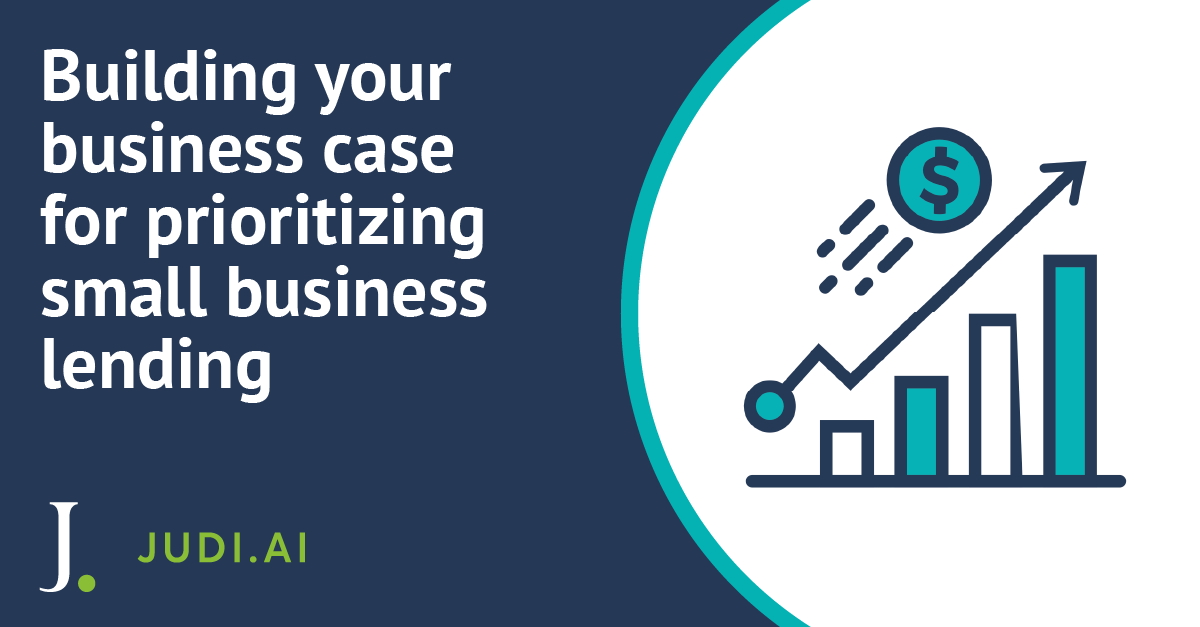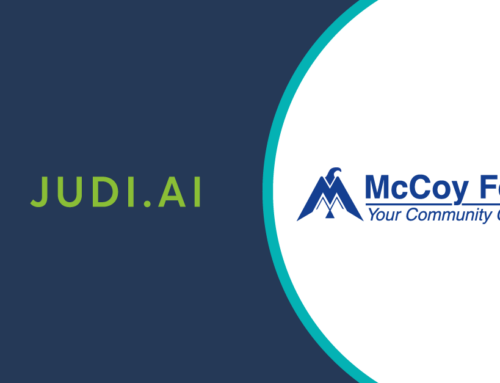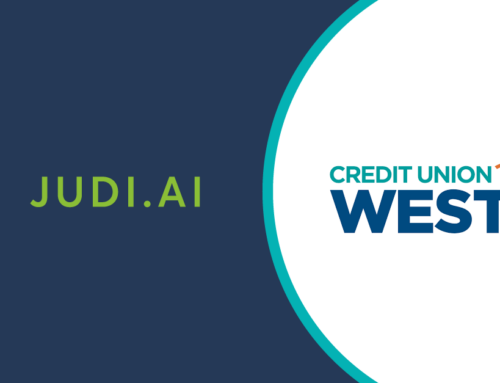On the surface, it might seem like building a business case for small business lending could be hard. It is often plagued by a classic “chicken-or-the-egg“ challenge.
- “We don’t really do much small business lending.”
- “It’s challenging and not worth the time.”
- “99% of our business lending is real estate secured, anyway.”
However, in a few short years, fintech lenders like Amazon, Square, Paypal and Kabbage have captured $20 billion+ of market share in small business lending. Now they are expanding the range of banking services they provide. Yet, community-based FIs have a cost of capital advantage and local brand affinity that should be impossible to beat – with some focus.
Why focus on small business lending?
At JUDI, we would argue that if you aren’t doing much grassroots small business lending, you are likely underserving your customers and missing a business opportunity. By grassroots small business lending, we mean C&I (as in non-real estate secured) lending under $250,000.
Small business employs something in the neighborhood of 50% of the workforce. 90%+ of businesses are “small”. Most have less than 10 people and need less than $100K. They don’t have real estate to offer. A significant portion identify access to capital as their top challenge.
If you buy into the opportunity, you may have a vision for future state: A scenario where small business lending is seamless, scalable, profitable, and a great experience for staff and borrowers.
Despite the often-present “chicken-or-the-egg” predicament, we believe that technology has paved the way for an attractive business case.
The first step is to identify your objectives. Are you looking to break even and round out your offering, or to scale a create meaningful net interest income? Do you view small business as a strategic customer segment, or are you compelled by brand and mission? There are no right answers – but understanding your drivers is important.
Financial ROI
Small business lending has historically been challenging, as underwriting processes have been slow and expensive given the loan sizes involved. If your institution currently does a substantial amount of small business lending, there may be cost savings and risk reduction opportunities associated with a new system.
- A digital workflow to streamline the application process (and the annual review process, as well) can translate into quantifiable time savings.
- How much could you increase automated decisioning by? How many hours per application do you save, and what is the value of an hour?
- Also, more advanced underwriting techniques and additional “alternative” data can potentially reduce loss rates and/or increase line assignment (and portfolio size) safely.
If your institution isn’t doing a lot of small business lending (which is more common), then how much incremental activity would be needed to justify the initiative? Thankfully, lending is an inherently measurable activity. Can you free up time and space to attract and process more volume?
The “napkin math” is easy and compelling.
- Imagine just ten incremental $50,000 loans per month with a 5% net interest margin and three-year term.
- 10 loans * $50,000 = $500,000 * 12 months = $6,000,000 underwritten.
- $6,000,000 * 5% annual NIM = $300,000 * three-year term = *$900,000 revenue.
Obviously, this is before losses, personnel costs, and technology costs. But the point is clear: Even a modest amount of volume provides significant operational leverage. Breakeven is likely only a few months away.
Strategic ROI
There are a couple of layers to the potential strategic ROI.
The first is offensive. One could argue that this customer segment is highly strategic. Something like 25% of households have a small business attached to them. The business is very likely their most precious asset with a heavy emotional attachment. Helping a small business owner can create an anchor to all kinds of other financial services within that household. If you bank a small business, there is a good chance you will bank the needs of the owner and their immediate family. A great way to start that connection is with a small business loan.
The second layer is defensive. Are your competitors servicing this important segment? Fintech lenders are starting to fill the void and are now beginning to offer a broader range of services – again, using small business as an anchor. And when other traditional community-based lenders inevitably adopt advanced technology, are you positioned to compete?
Brand equity and mission
As a community–based financial institution, is it part of your mission to serve the small businesses in your community? How valuable is it to you to have small businesses circulating in your community, talking about your borrower–friendly process and their excitement about newfound capital? In a world increasingly dominated by large chains, online and big box retailers, small business success stories evoke powerful reactions in the community. Being associated with this can differentiate you from the big banks in a way that an auto loan isn’t likely to.
Quantifying what’s possible
Whether you’re just starting your small business lending journey or you have an established portfolio, there’s a strong case to be made on multiple fronts. We speak with community FIs of all shapes and sizes from across the country, and we’d love to sit down with you to talk about your market potential, your unique circumstances, and with our ROI Calculator, what “good” could potentially look like.




